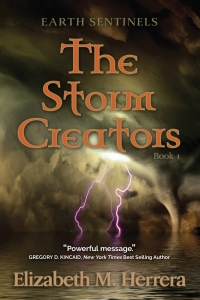Bear Claw Lake
In a remote area of Canada, a white, double cab pickup truck sped down Highway 55 heading toward Bear Claw Lake, one of the deepest and largest bodies of water in the Alberta province, as well as the major tributary for the Saskatchewan and Beaver rivers. Traces of the Old North Trail ran beside its deep waters and through the surrounding dense forest, used for centuries by the Blackfoot Nation for migration and trading all the way from the permafrost Yukon Territory to sunny New Mexico. Inside the truck was a team of independent specialists commissioned by the Falicon Gas and Oil Company to investigate an ongoing oil spill.
The disaster had been caused by Falicon’s use of the in-situ extraction method that pressurized the oil bed with extremely hot steam and chemicals, cracking the reservoir, causing the oil to escape through spider web ruptures in the earth.
The white pickup turned off the two-lane highway onto a dirt road, dust billowing as it sped toward the disaster. The driver wore a pistol strapped to his side and rested his arm on the console. A scientist sat in the front passenger’s seat reviewing paperwork. He sighed, setting the papers down. The three engineers in the backseat rode quietly looking out the windows.
A glimpse of an old pickup in the rearview mirror caught the driver’s attention. It was a 1973 two-tone Ford with a rusty chrome grill and bumper. Inside were two men from the nearby Bear Claw First Nation reservation. Tom Running Deer sat in the passenger seat holding a Winchester 30-30 rifle between his knees with the barrel protruding a few inches above the dashboard. His black t-shirt was taut over his muscular frame. A few gray hairs highlighted his long black hair that was held back in a ponytail. Beside him was his great-uncle, Chief Keme, who gripped the wheel with his strong hands. A sterling silver ring, accented with turquoise, decorated his right ring finger. He wore a clean, white shirt with a frayed collar. Both men fiercely glared at the intruders in front of them.
The company driver checked the rearview mirror again, saying, “Don’t look, but we’re being tailed by Indians.” The engineers and scientist spun around, peering out the back window. “Jesus! I told you not to look!” The men quickly faced forward again. “Now keep your cool. They’re probably just headed back to the rez, having a little fun with us.” The driver’s comments provided little relief to his nervous passengers.
The old Ford barreled in on the white pickup truck, nearly bumping its rear end before easing back. The engineers and scientist tensely waited for the driver to react, but he drove in silence until the Ford veered off, rumbling down another dirt road, disappearing behind a cloud of dust.
A mile later, the Falicon truck came to a security check point. A guard waved it through, directing the driver to a grassy area where a dozen company vehicles were already parked. Beyond this point were hundreds of square kilometers of what used to be a virgin forest.
The men got out, removing their equipment from the back of the truck. When everyone was ready, they trudged through the eerily quiet forest.
Mike, the head engineer, sniffed the air. “God, something smells terrible!”
The team cautiously approached the lake, observing the disaster spread out before them. The water was covered with an iridescent film of oil that was decomposing into a foul, brown sludge along the shoreline, which was littered with a few dead Canadian geese and a loon gasping for air while struggling to flap its oil-covered wings. A bloated beaver carcass bobbed in the lake. Dead walleye, sauger and lake trout floated on the surface. The surrounding vegetation lay rotting in the sun. The cleanup crew, fully protected inside their bio-hazard suits, used rakes to cull the tar balls.
The scientist stared at the mess shaking his head. He tried to contain his anger, but his voice trembled as he said, “I gave my recommendations early on. I told headquarters we had no ‘Plan B’, but they went ahead anyway.” He lost control. “Fuck the animals! Fuck the planet!” He threw his hard hat down. “Do they really expect us to fix the earth!?”
The ground shuddered, alarming the scientist, who shouted, “Did you feel that!?”
Mike answered, “Yeah…strange.”
Lightning blazed out of the clear blue sky, striking the water. Thunder boomed as the oil slick ignited, creating a lake of fire. The flames reached the shoreline, following channels of oil runoff, spreading through the forest until one of the fire streams reached an oil reservoir where it exploded, creating a mammoth ball of fire that billowed over the forest. The force of the combustion knocked down the engineers, scientists and cleanup crew. Thick, black smoke descended upon the dazed team members, who struggled to their feet, coughing and choking. The earth violently shook again. Everyone raced out of the man-made hell.
The sound of the oil spill explosion reverberated throughout the Bear Claw First Nation’s reservation, which was located a mile from the lake in the middle of the forest where the tribe lived in dilapidated houses that were clustered together like a herd of buffalo protecting their young from the wolves. Crooked stove pipes stuck out of the rooftops with missing shingles. Broken-down cars and rusted-out trucks were parked haphazardly in the weeds. Children, startled by the blast, immediately stopped chasing a ball. Men playing poker and drinking beer under the shade of a tree were stunned into silence as they watched the fireball arch over the trees. Finally one of the men spoke, voicing what the others were thinking, “I knew the oil company would screw up. They always do.”
“It’s time for a council meeting,” said Tom Running Deer, “It’s time for this to end.”
Buy Online:

One thought on ““Bear Claw Lake” book excerpt from “The Earth Sentinels: The Storm Creators””